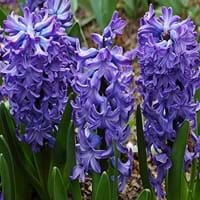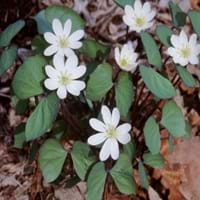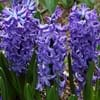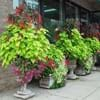Life Span
Perennial
Perennial
Type
Bulb or Corm or Tuber
Perennial
Origin
Mediterranean, Western Asia
North America, United States, Northeastern United States, Mid-Atlantic United States, Southeastern United States, Canada
Types
Not Available
Not Available
Habitat
Mediterranean region
gardens, Hardwood forests
USDA Hardiness Zone
4-9
5-7
Sunset Zone
21,22
2a, 2b, 3a, 3b, 4, 5, 6, 7, 8, 9, 10
Habit
Clump-Forming
Clump-Forming
Flower Color
White, Yellow, Red, Blue, Purple, Pink, Lavender, Violet
White
Flower Color Modifier
Bicolor
Bicolor
Fruit Color
Not Available
Light Green
Leaf Color in Spring
Green
Green, Blue Green
Leaf Color in Summer
Light Green
Green, Gray Green
Leaf Color in Fall
Several shades of Green
Green, Gray Green
Leaf Color in Winter
Light Green
Light Green
Leaf Shape
Long slender
Butterfly shaped
Plant Season
Spring, Winter
Spring, Summer, Fall
Sunlight
Full Sun, Partial Sun
Partial shade, Full Shade
Type of Soil
Loam
Clay, Loam
The pH of Soil
Acidic, Neutral
Neutral, Alkaline
Soil Drainage
Well drained
Average
Bloom Time
Early Spring, Spring, Late Winter, Indeterminate
Late Spring, Early Summer
Tolerances
Black Walnut Toxicity, Rabbit, Shade areas
Drought
Where to Plant?
Container, Ground, Pot
Ground, Pot
How to Plant?
chipping, Offsets, scooping, Twin scaling, Vegetative
Divison, Seedlings, Stem Planting
Plant Maintenance
Low
Medium
Watering Requirements
Medium
Medium
In Summer
Lots of watering
Lots of watering
In Spring
Moderate
Moderate
In Winter
Average Water
Average Water
Soil pH
Acidic, Neutral
Neutral, Alkaline
Soil Type
Loam
Clay, Loam
Soil Drainage Capacity
Well drained
Average
Sun Exposure
Full Sun, Partial Sun
Partial shade, Full Shade
Pruning
Remove damaged leaves, Remove dead branches, Remove dead leaves
Remove deadheads, Requires very little pruning
Fertilizers
All-Purpose Liquid Fertilizer, General garden fertilizer, Time release fertilizer
No fertilizers needed
Pests and Diseases
Pests and diseases free
Pests and diseases free, Red blotch
Plant Tolerance
Black Walnut Toxicity, Rabbit, Shade areas
Drought
Flower Petal Number
Single, Double, Semi-Double
Single
Foliage Texture
Medium
Coarse
Foliage Sheen
Glossy
Matte
Attracts
Insects
Bees, Butterflies
Allergy
Asthma
no allergic reactions
Aesthetic Uses
Beautification, Bouquets, Cottage Garden, Landscape Designing, Showy Purposes
Showy Purposes
Beauty Benefits
Not Available
Not Available
Environmental Uses
Not Available
Air purification
Medicinal Uses
Not Available
Cancer, Diuretic
Part of Plant Used
Flowers
Flowers, Root
Other Uses
Decoration Purposes, Showy Purposes
Not Available
Used As Indoor Plant
Yes
Yes
Used As Outdoor Plant
Yes
Yes
Garden Design
Bedding Plant, Container, Cutflower, Mixed Border, Rock Garden / Wall
Feature Plant, Groundcover
Botanical Name
Hyacinthus orientalis
JEFFERSONIA diphylla
Common Name
Hyacinth, common hyacinth, garden hyacinth, dutch hyacinth
Not Available
In Hindi
ह्यचीन्थ
Twinleaf
In German
Hyazinthe
Twinleaf
In French
jacinthe
Twinleaf
In Spanish
jacinto
Twinleaf
In Greek
υάκινθος
Twinleaf
In Portuguese
jacinto
Twinleaf
In Polish
hiacynt
Twinleaf
In Latin
et hyacinthinas,
Twinleaf
Phylum
Magnoliophyta
Tracheophyta
Class
Liliopsida
Magnoliopsida
Order
Liliales
Ranunculales
Family
Liliaceae
Berberidaceae
Genus
Hyacinthus
Jeffersonia
Clade
Angiosperms, Monocots
Angiosperms, Eudicots
Tribe
Not Available
Not Available
Subfamily
Scilloideae
Not Available
Number of Species
Not Available
Difference Between Hyacinth and Twinleaf
If you are confused whether Hyacinth or Twinleaf are same, here are some features about those plants to help you choose better. Many people think that these two plants have the same characteristics, but one can see Hyacinth and Twinleaf Information and learn more about it. Fertilizers required for proper growth of Hyacinth are All-Purpose Liquid Fertilizer, General garden fertilizer and Time release fertilizer, whereas for Twinleaf fertilizers required are No fertilizers needed. Hence, one should know the basic difference between Hyacinth and Twinleaf if you are planning to have them in your garden to enhance its beauty.
<
Flowering PlantsImportance of Hyacinth and Twinleaf
Want to have the most appropriate plant for your garden? You might want to know the importance of Hyacinth and Twinleaf. Basically, these two plants vary in many aspects. Compare Hyacinth and Twinleaf as they differ in many characteristics such as their life, care, benefits, facts, etc. Every gardener must at least have the slightest clue about the plants he wants to plant in his garden. Compare their benefits, which differ in many ways like facts and uses. The medicinal use of Hyacinth is Not Available whereas of Twinleaf is Cancer and Diuretic. Hyacinth has beauty benefits as follows: Not Available while Twinleaf has beauty benefits as follows: Not Available.
Compare Facts of Hyacinth vs Twinleaf
How to choose the best garden plant for your garden depending upon its facts? Here garden plant comparison will help you to solve this query. Compare the facts of Hyacinth vs Twinleaf and know which one to choose. As garden plants have benefits and other uses, allergy is also a major drawback of plants for some people. Allergic reactions of Hyacinth are Asthma whereas of Twinleaf have no allergic reactions respectively. Having a fruit bearing plant in your garden can be a plus point of your garden. Hyacinth has no showy fruits and Twinleaf has showy fruits. Also Hyacinth is not flowering and Twinleaf is flowering. You can compare Hyacinth and Twinleaf facts and facts of other plants too.





